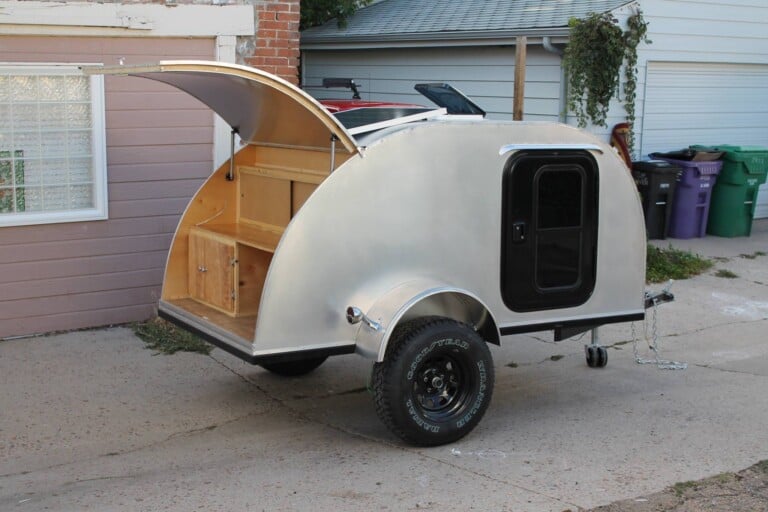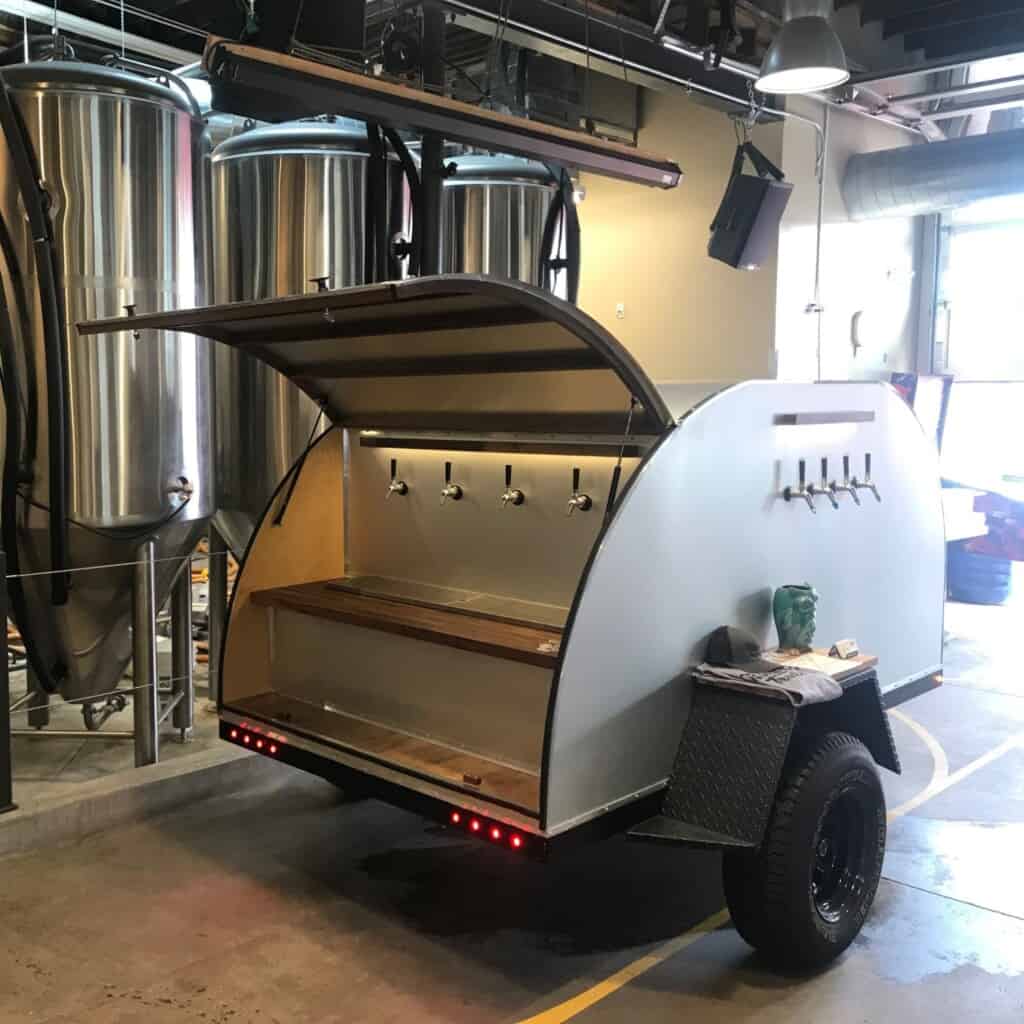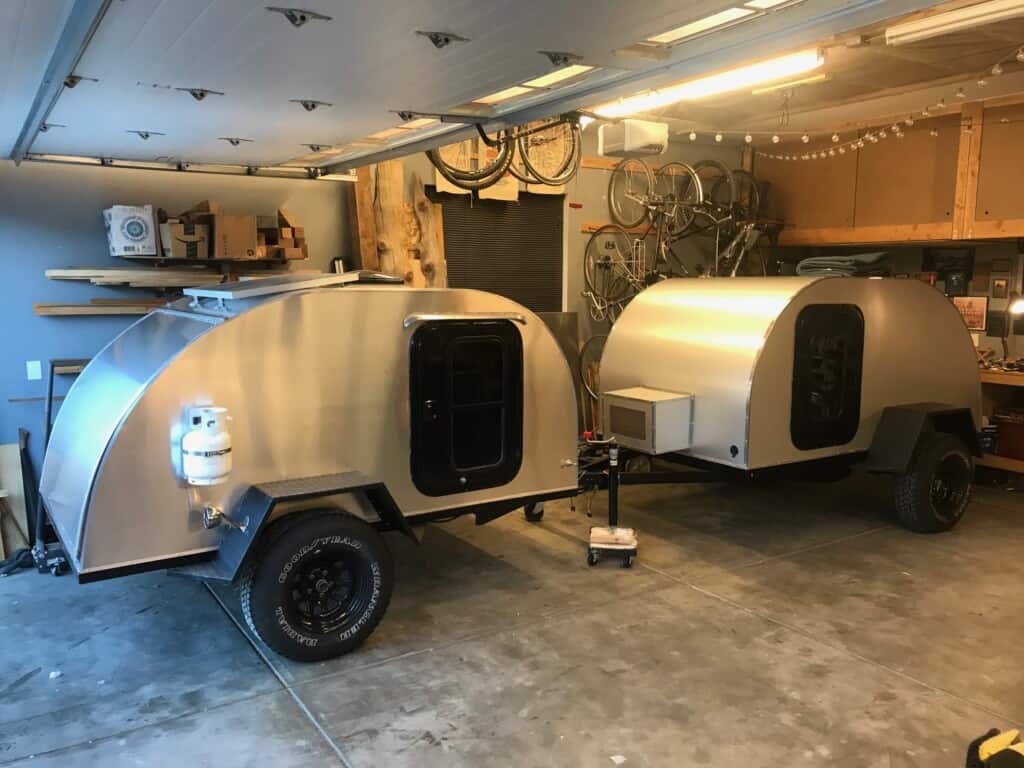Walter
RAM ProMaster
136″ WHEELBASE, HIGH ROOF
Many survey respondents shared why they chose Wayfarer Vans over a DIY campervan build. Here’s a few of those responses:
“I realized I did not have the skill and the whole endeavor would be stressful and the end result would not be good. Then I found Wayfarer and I found exactly what I wanted at a price within my budget. On top of all that, the mission of Wayfarer and ethos of company staff was in line with my own (and Austin was awesome answering dozens of questions).” -Luise W.
“After researching a self-build, I knew I wasn’t nearly qualified to attempt it. Plus, when you visit the popular building forums it is full of stories of never-ending builds. Wayfarer offers a quick and relatively painless and quick solution to this problem.” -Steve C.
“My build would have been heavier, clunkier with more gotchas when complete. A kit does away with most of that.” -Ed H.
“Because Wayfarer offered a pretty simple build like I wanted and since they have a system down, I figured it would be worth paying to have it done by someone with a process than to spend about the same amount of money and a lot of time to make all of the learner mistakes on something we use a lot. We are so glad we went with Wayfarer Vans instead of DIY!” -Clara H.
My journey to joining the Wayfarer Vans team started in 2022 when my wife and I began exploring the Wayfarer Vans conversion, a purchase we’re happy to have now made.
Six years prior (circa 2016), we built our own DIY teardrop trailer in a friend’s garage to elevate our camping experience.
Since that time I’ve built two more teardrop trailers, a mobile bar, and even a mobile conference room converted from a late 1970’s Avion camper. Across all these builds, I have learned much about DIY projects and what to know before pursuing one. It’s this knowledge and experience that led me to purchase a Wayfarer Vans conversion instead of building my own.

Anyone can build a DIY campervan conversion, even with just a basic understanding of engineering and carpentry. That said, less skill and knowledge means more mistakes, more expense, and more time. As long as you’re comfortable with learning on the fly and being patient in the face of unforeseen problems, the sky’s the limit.
For some, DIY is a way to grow their skills and expertise, strengths that you’ll never lose in life. To those, I say huzzah! For others, DIY is a way to cut costs. To those, I say builders beware… while you might save some dough in the long run, unforeseen “expenses” like opportunity cost of making memories sooner and the value of your time can offset the benefits of saving a few dollars initially. We dive into all these scenarios further below.
Another note about DIY campervans that is quite different from building a teardrop trailer are the challenges of working with pre-designed walls that are not flat and full of quirks. DIY framing on an uneven surface while trying to maximize space is a deceiving and difficult undertaking.
To summarize, building a DIY campervan doesn’t take rocket science but it does require planning, patience, and forethought.
There’s a lot to say about materials, and a lot of ways you can go with a DIY van. The selection depends entirely on your desired fit, function, and finish. If a modest budget is your main goal, basic plywood and unfinished steel can get you a bed platform with ample storage space and cabinetry. It won’t have the polished appearance you might desire but it will serve its purpose.
For more professional builds, important considerations include a higher budget and material availability. While the local lumber store will have a basic plywood readily available, higher-end woods like 9-ply baltic birch are harder to find, and other vanbuild materials often have lead times and/or backorders. Many of the materials used by Wayfarer Vans require a wholesale account and are not available to the public. And, if you are able to get your hands on them, they are obscenely expensive.
As a conversion van builder with nearly a decade of professional van builds, Wayfarer Vans machines our own materials in-house to meet a high standard of quality while leveraging wholesale cost efficiency on lumber and materials. It’s how we’re able to offer a complete campervan conversion starting at just $20k.
As the old carpentry adage goes, “You don’t pay me for the hour it took to do it, you pay me for the 10 years I spent learning to do it in an hour!”
If DIY is your intent, I encourage you to get granular on the details of your build and map out the necessary materials and pricing accordingly.

Ahh, time. Working against the clock… living on borrowed time… the sayings go on. Of all the things you ‘give’ to a DIY van build, time is the one you can never get back.
My first teardrop took 6 months and 350-400 hours to complete. Do a little research and you’ll see basic campervan builds requiring around 300 hours and high-end conversions taking upwards of 1,000 hours or more.
Here’s a quick breakdown to envision your time in dollars. This is based at $50 per hour to keep the math simple.
|
Hours |
Hourly Rate |
Labor Value |
|
300 |
$50 |
$15,000 |
|
500 |
$50 |
$25,000 |
|
750 |
$50 |
$37,500 |
|
1000 |
$50 |
$50,000 |
The time it takes to complete depends on a few factors including:
At Wayfarer Vans, our base price includes all of the materials, production, and build out, not to mention a 5-star experience (check out our Google Reviews to see what others are saying).
Here’s what one Wayfarian shared in a recent survey:
“We wanted to avoid making costly mistakes, which seems to be a common pitfall with most DIYs that we researched. Wayfarer’s design had everything we wanted and was built by experts with way more experience at a super reasonable price.” -Mitchell H.
Time is possibly the most important factor to consider when evaluating a DIY van, not to mention the opportunity cost of getting out and adventuring sooner with one of our conversions.
It’s imperative you have the right tools for a DIY job. Like materials, tool prices and options vary wildly, though a high-end, professional finish can be achieved without the need for expensive tool brands.
A few foundational tools you’ll need to purchase before starting a DIY build include:
While this is not an exhaustive list, it covers some of the essentials. Purchasing, owning, and maintaining tools is an important consideration in a DIY build.
Do you have a place to store and work on a campervan conversion?
The benefit of a DIY campervan, as compared to the fore mentioned teardrop camper, is that work can be done inside of the van itself, offering a natural shield from poor weather conditions. That said, much of the cutting and furniture assembly will occur outside the van. It can be difficult to stay protected from an unexpected storm or heavy wind during these outdoor tasks. Alas, it’s important to have a secure and semi-comfortable place to work on your build and store all the materials that will eventually go inside.
If you’re restricted to an outdoor space for a DIY campervan build, you may want to consider timing the work seasonally when it’s not too hot or cold, factors which are obviously influenced by where you live. Further, having a small heater or fan inside the van can help with temperature control.
If your space is limited and you lack an area for storage of tools and materials, a turnkey conversion like Wayfarer Van might be more suitable for you.

Beyond the five considerations above, Wayfarer Vans offers a few additional perks that you won’t get if you DIY.
Warranty – no surprises here: when you DIY a campervan, you’re on the hook to fix issues that arise or find someone who will. If you’re pursuing the latter, it can be difficult to find a shop that will work on a conversion completed by someone else. The same goes for insurance; many insurers will not cover a DIY campervan conversion.
At Wayfarer Vans, we proudly stand behind our work. If an element of a conversion has manufacturing defects or a problem due to our workmanship within one year from your install or ship date, we will take care of you at our shop at no charge. If you can’t visit our shop in person, we will work with you to ship small items.
For more info on our warranty, visit our FAQs page.
Wayfarer App – we created an exclusive app for Wayfarer Vans owners to add, share, and review the best campsites, from gems far off the paved roads to friendly roadside parking lots for a quick sleep. The beauty of finding your next spot on the Wayfarer app is that you’ll know it was added by a fellow Wayfarian with a similar vehicle.
Wayfarer Challenge – you pick your own challenge and track the number of nights you use your Wayfarer Van as an adventure basecamp, pushing yourself to reach a milestone of 25, 50 or 100 nights. We’ve also introduced the Wayfarer Year Challenge – log 12 consecutive months of camping in your camper van for the ultimate year of adventure! Submit your adventure log and we’ll help you celebrate by sending Wayfarer Challenge stickers for each one you complete.
Modular Furniture – we know that no person’s needs are the same on the road, nor is there preference for their camper van layout. It’s why we put modularity first and are one of very few camper van companies that make our interior furniture adjustable. Check out this video that goes into greater detail on how our boot box, cubby, galley, and wheel well boxes can be rearranged inside the van using just a 9/16-in socket wrench.
Customization – it’s easy as pie to use your Wayfarer Vans campervan interior as a launchpad for customization. To see all the ways that current Wayfarians have personalized their vans, join the Wayfarer Vans Fans Facebook group.
Dealer Partners – we have a wide array of dealership partners to whom we can connect you and, as a bonus, we can roll the cost of your conversion into your monthly payment. With a DIY build, you’ll be required to find your own van and will not be able to finance the interior components.
Many moons before joining the Wayfarer Vans team, my wife and I decided on a campervan because it checked all the right boxes for how we want to travel and adventure at this point in our lives. We wanted something simple and functional with as much interior space as possible. And, across all our research, Wayfarer Vans continuously rose to the top because their simplistic philosophy matched ours.
Despite having the skills, tools, and space, we felt that a DIY campervan simply didn’t make the most sense when we could access a beautiful, high quality conversion through Wayfarer at nearly the same cost.
We’ve never looked back!